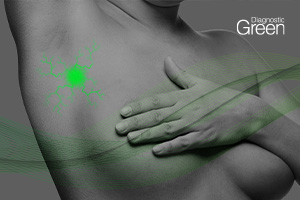The aims of the present study were to describe the use of intravenous indocyanine green (ICG) to assess vascularity of urinary diversion (UD) after pelvic exenteration for gynecologic cancers, to evaluate the feasibility and safety of this technique, and to assess the postoperative complications. Methods: Prospective, observational, single-center, pilot study including consecutive patients undergoing anterior or total pelvic exenteration due to persistent/recurrent gynecologic cancers between August 2020 and March 2021 at Fondazione Policlinico Gemelli IRCCS, Rome, Italy. All patients underwent intravenous injection of 3–6 ml of ICG (1.25 mg/ml) once the UD was completed. A near-infrared camera was used to evaluate ICG perfusion of anastomoses (ileum–ileum, right and left ureter with small bowel, and colostomy or colorectal sides of anastomosis) a few seconds after ICG injection.
Results: Fifteen patients were included in the study. No patient reported adverse reactions to ICG injection. Only 3/15 patients (20.0%) had an optimal ICG perfusion in all anastomoses. The remaining 12 (80.0%) patients had at least one ICG deficit; the most common ICG deficit was on the left ureter.
Conclusion: The use of ICG to intraoperatively assess the anastomosis perfusion at time of pelvic exenteration for gynecologic malignancy is a feasible and safe technique.
https://www.frontiersin.org/articles/10.3389/fonc.2021.727725/full




